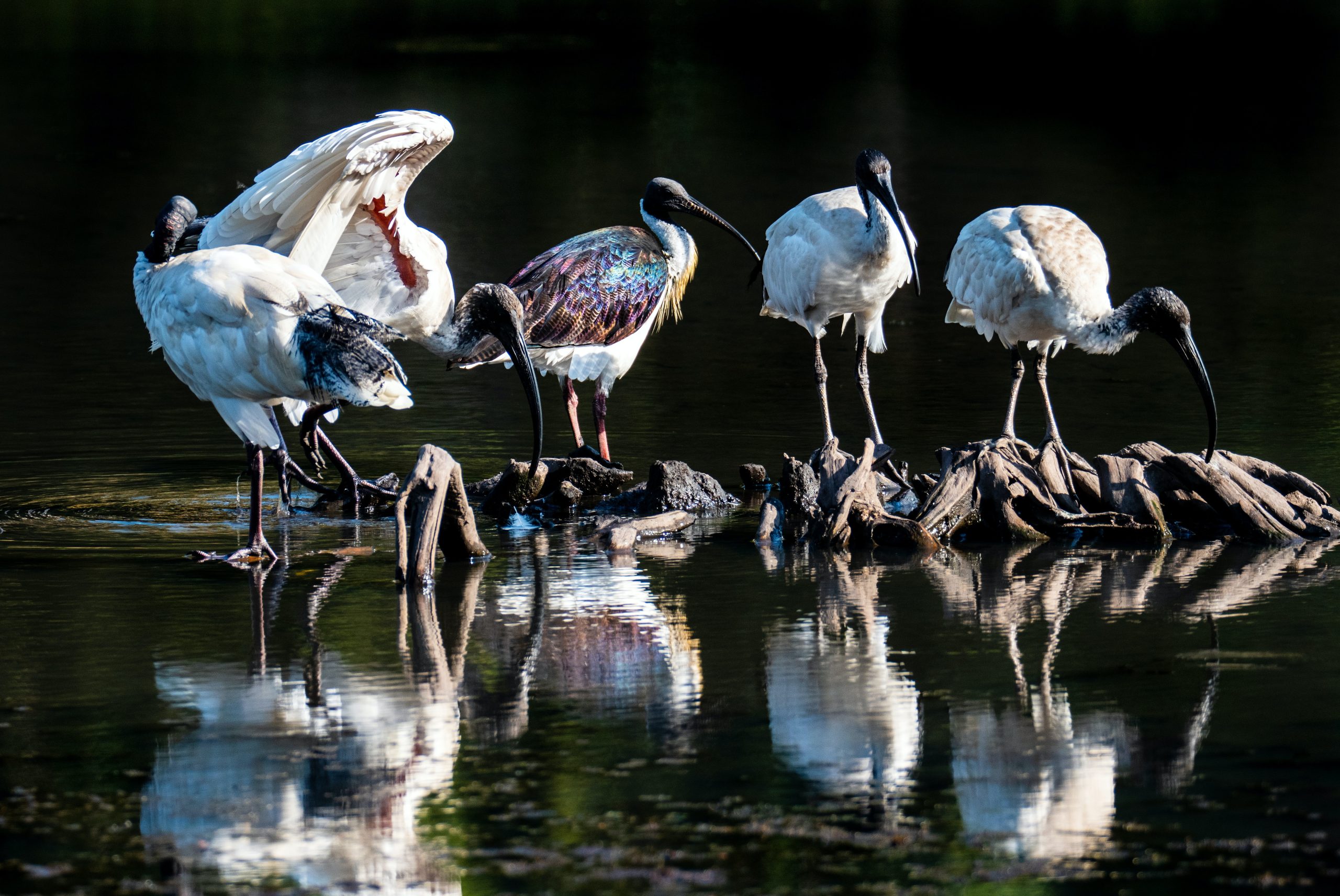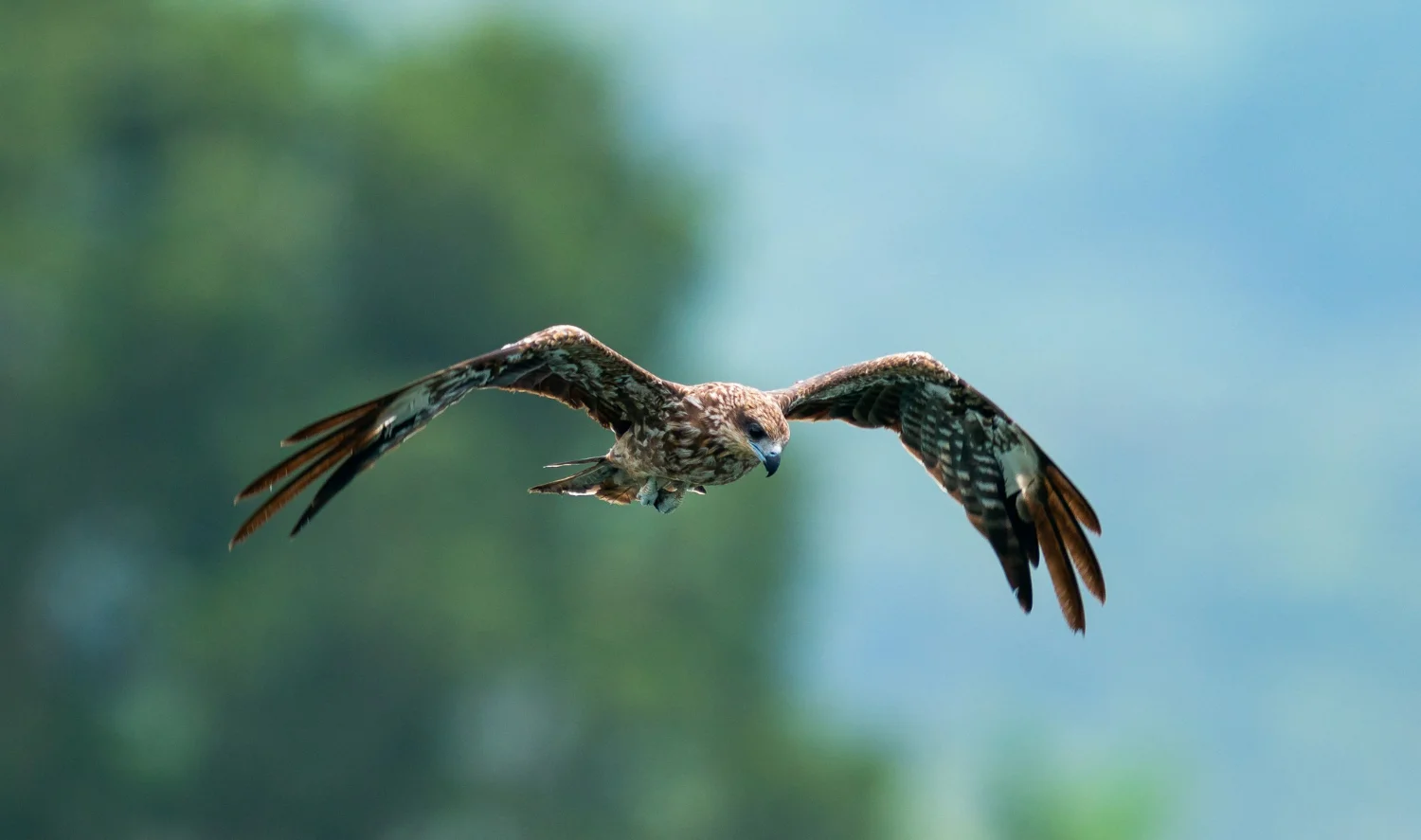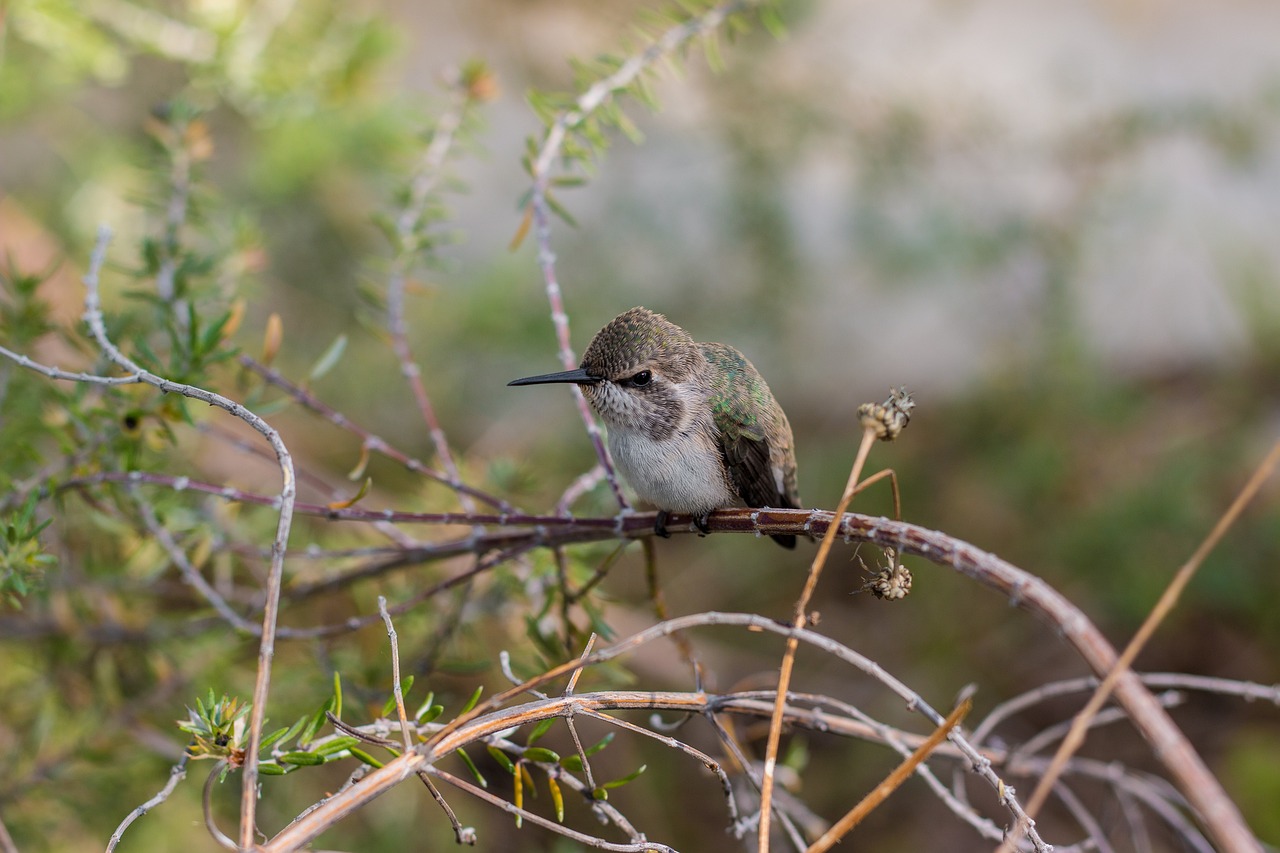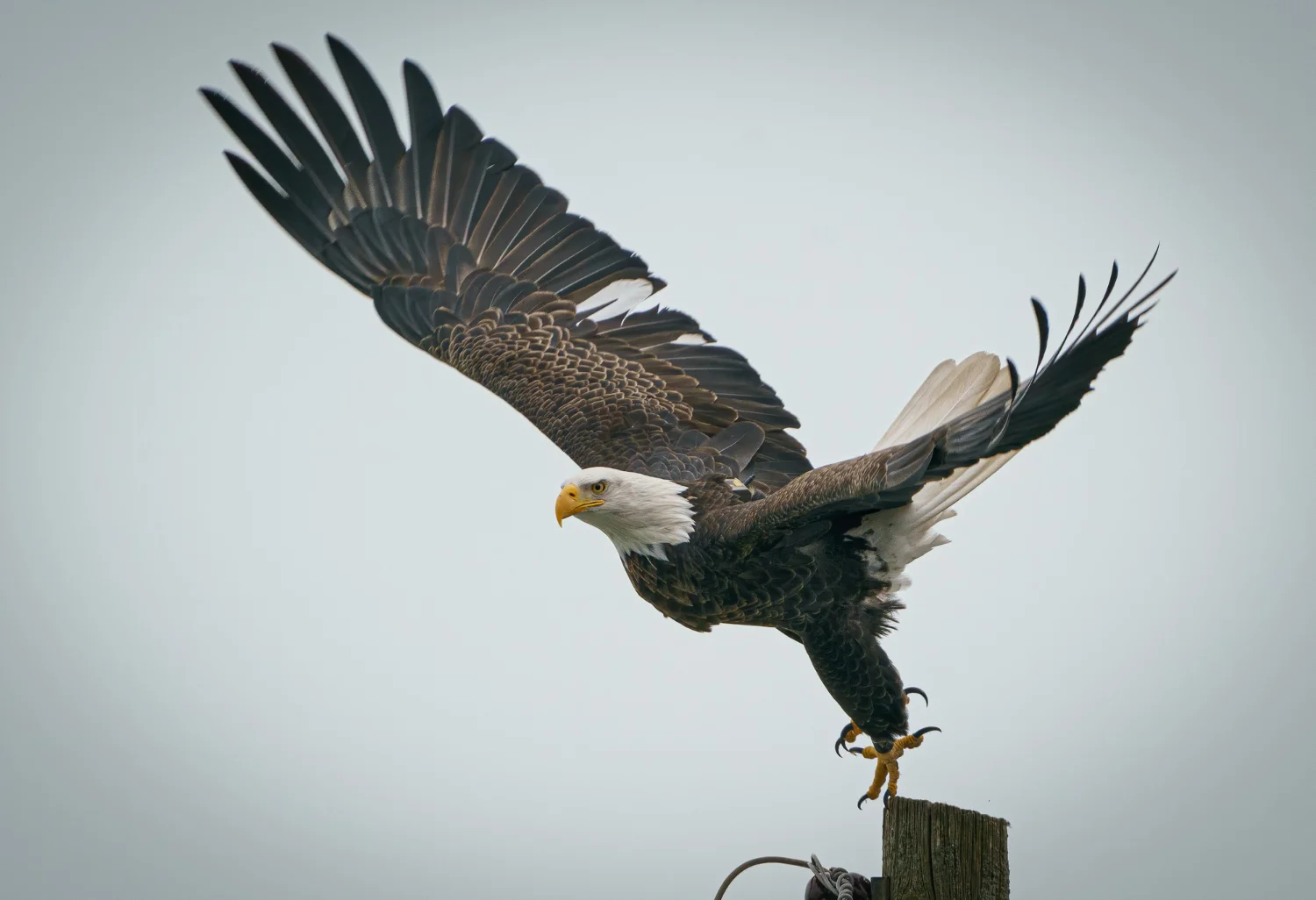The vast, diverse world of birds spans over 10,000 unique species. Among this multitude, a number of bird starts with i have common names starting with the letter I. Read on to discover amazing avian wildlife beginning with the letter I.
16 Birds That Start with I
Birds that have names starting with the letter I include some beautiful and interesting species found around the world. In this article, we will learn about 16 of these avian creatures and discover what makes them unique. From tiny hummingbirds to large birds of prey, these I-birds showcase the diversity found in nature.
Ibis
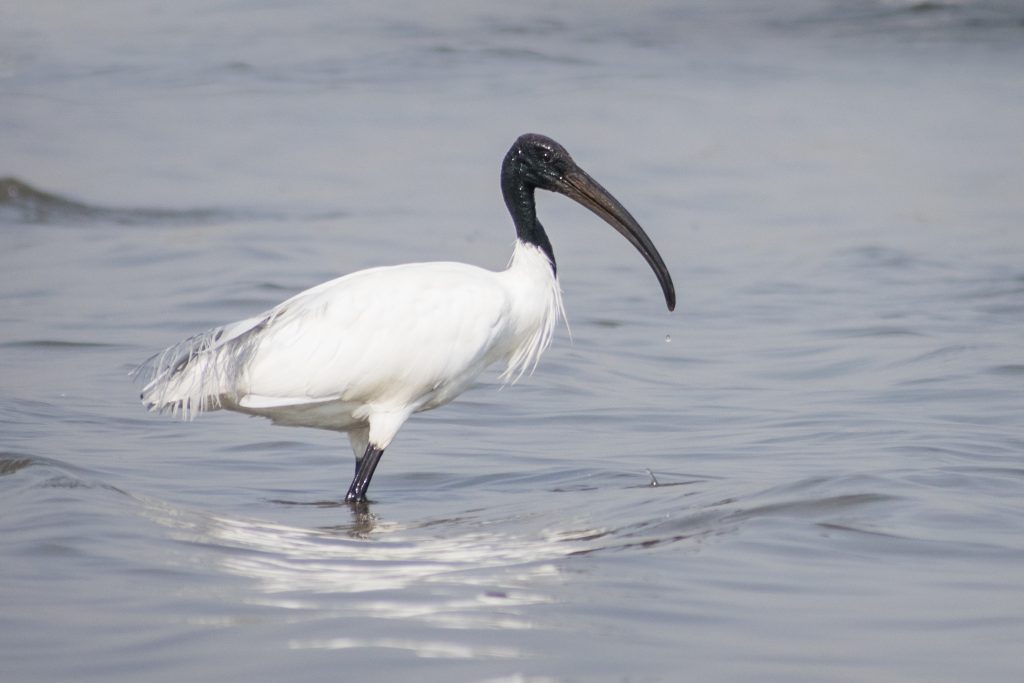
The ibis is a long-legged wading bird found in warm regions around the world. There are actually several species of ibis, but some of the most widespread and recognizable are:
Glossy Ibis
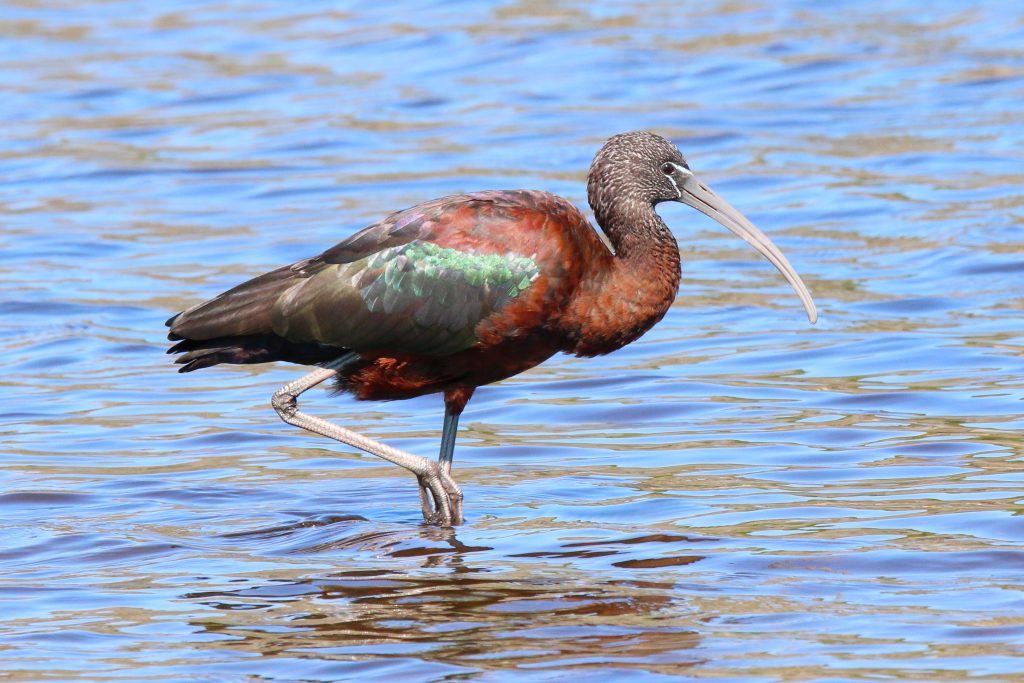
The glossy ibis has dark plumage that shines with blue and green in the sunlight. Its curved bill allows it to probe for food like insects, crustaceans, fish, and frogs in the marshes and wetlands it inhabits.
Key Facts:
- Length: 18-22 inches
- Wingspan: 33-38 inches
- Habitat: Marshes, swamps, wetlands
- Diet: Invertebrates, frogs, fish
- Range: Africa, Asia, Europe, Australia
Australian White Ibis
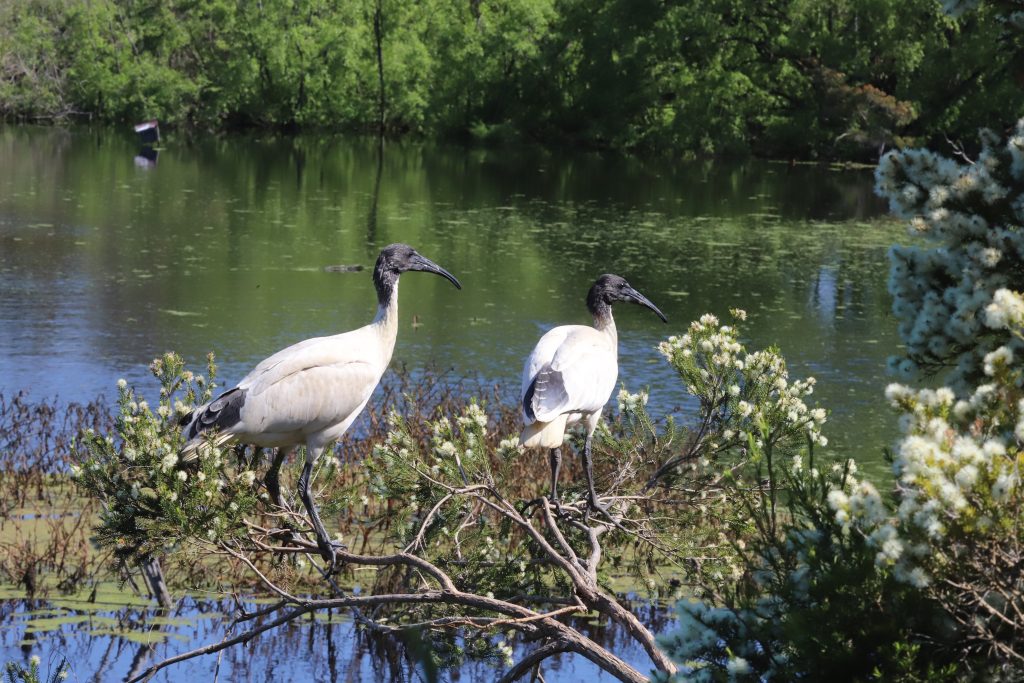
Often seen foraging in groups in public parks and grassy areas, the Australian white ibis is very common in urban parts of Australia. It has mostly white feathers but black wing tips. Its downcurved bill probes human leftovers as well as natural food sources.
Key Facts:
- Length: 25 inches
- Wingspan: 42 inches
- Habitat: Marshes, urban parks, trash dumps
- Diet: Insects, crustaceans, human scraps
- Range: Eastern Australia, Tasmania
Sacred Ibis
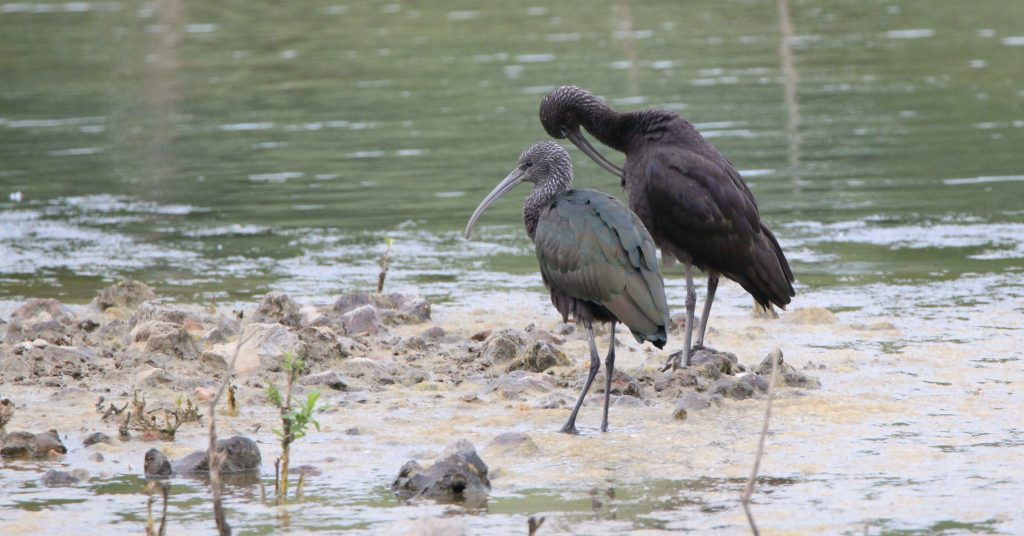
Revered in ancient Egypt, the sacred ibis frequents marshes, mudflats, and wet grasslands hunting for various invertebrates. Its bald black head provides a striking contrast to its white feathers.
Key Facts:
- Length: 21-27 inches
- Wingspan: 41 inches
- Habitat: Wetlands, mudflats, marshes, flooded fields
- Diet: Worms, insects, small reptiles, amphibians
- Range: Africa, Middle East, coastal southwest Europe
Indigo Bunting
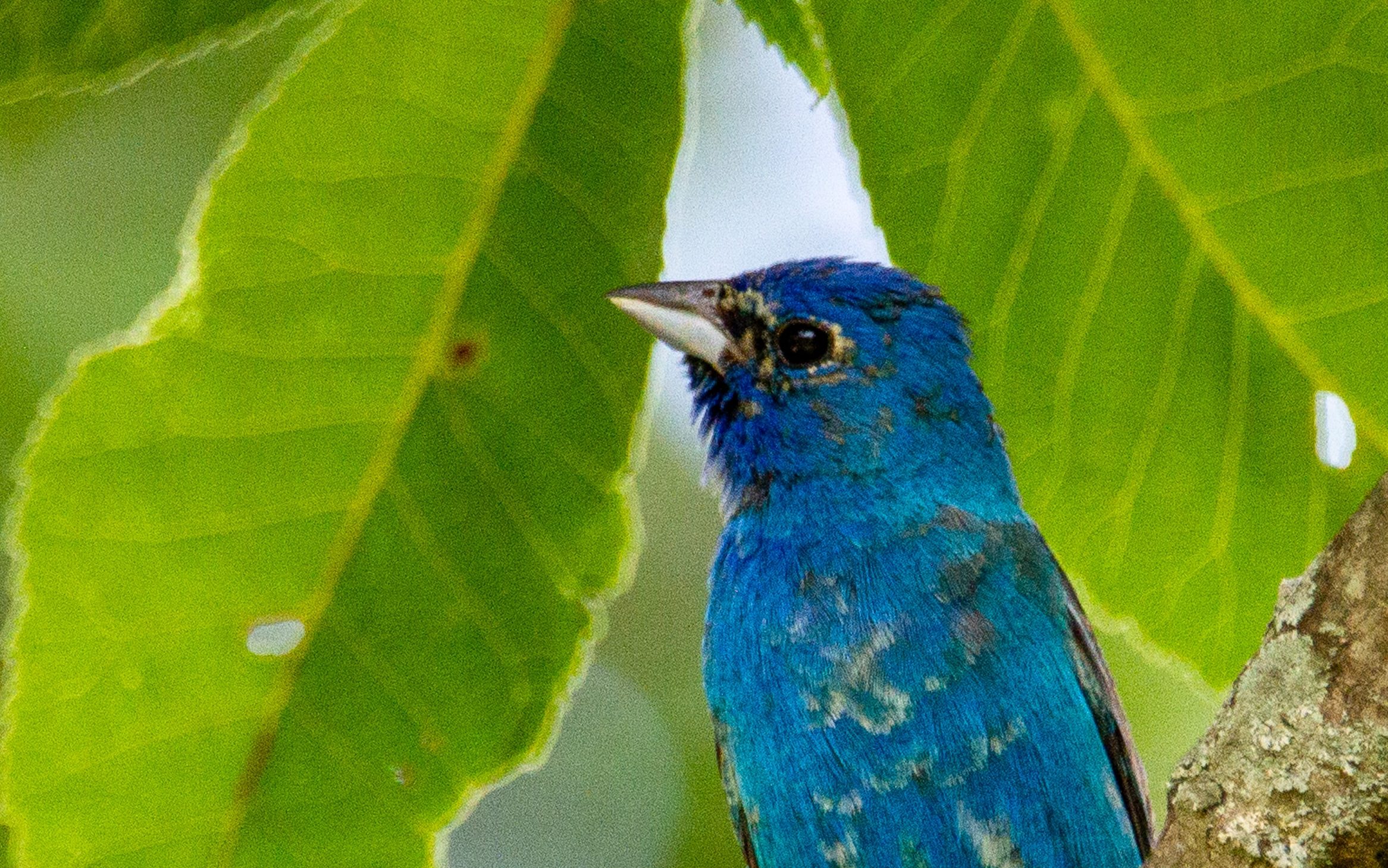
The indigo bunting is a small vibrant songbird that breeds throughout eastern North America. Only the male sports the bright blue plumage during breeding season from which this bird gets its name. Females have brown feathers. These seed-eating birds migrate in large flocks to wintering grounds in Mexico, Central America, and the Caribbean.
Key Facts:
- Length: 4.7-5.1 inches
- Wingspan: 7.5-9.1 inches
- Habitat: Thickets, woodland edges, farmland
- Diet: Seeds, insects
- Range: Eastern and central North America; winters in the tropics
Inca Dove
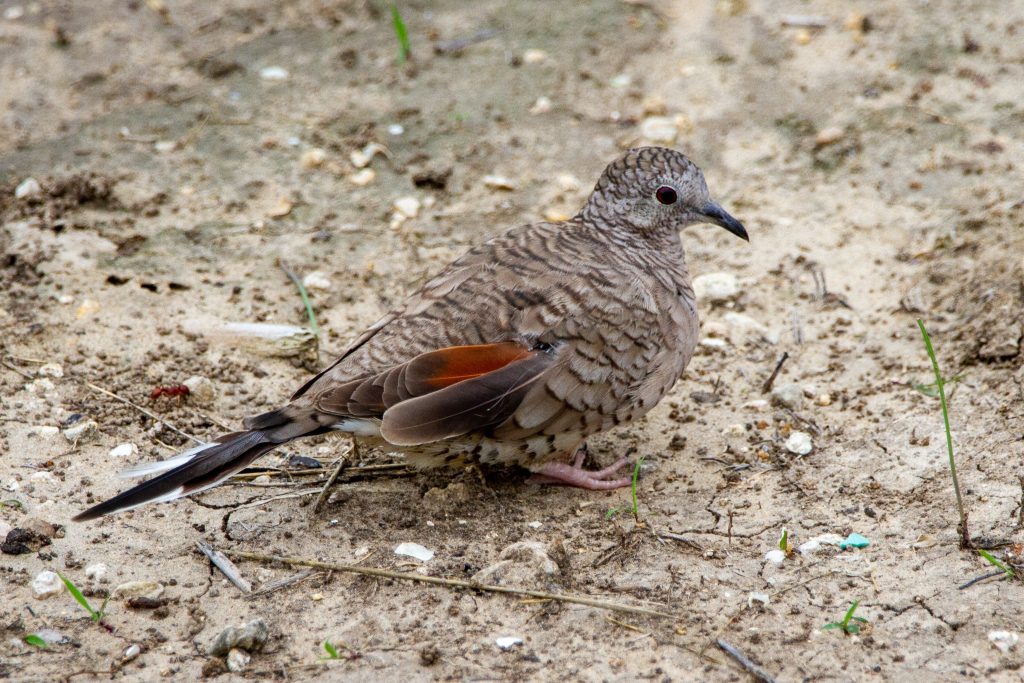
The small Inca dove can be identified by the scaly appearance of its neck and breast feathers. It is a common sight throughout the desert southwest United States where it forages on the ground for seeds and grains. Its cooing call is a familiar background sound in this arid region.
Key Facts:
- Length: 8 inches
- Wingspan: 11 inches
- Habitat: Desert, brushy areas
- Diet: Seeds, grains from ground
- Range: Southwestern USA, Mexico
ʻIʻiwi
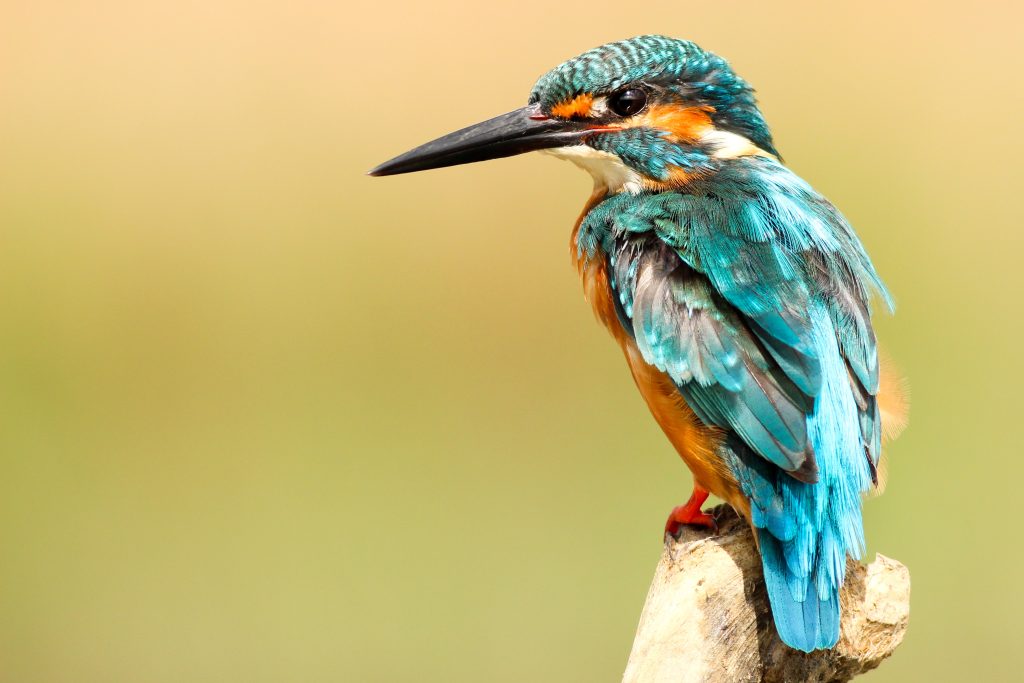
Endemic to Hawaii, the ʻIʻiwi is a stunning red honeycreeper with a long, curved salmon-colored bill used for accessing nectar from native Ohio trees. This important pollinator faces critical habitat loss as the Ohio forests it depends on are threatened.
Key Facts:
- Length: 5-6 inches
- Wingspan: 7-8 inches
- Habitat: Ohio forests
- Diet: Nectar, insects
- Range: Hawaii (Big Island, Maui, Molokai)
Indian Peafowl
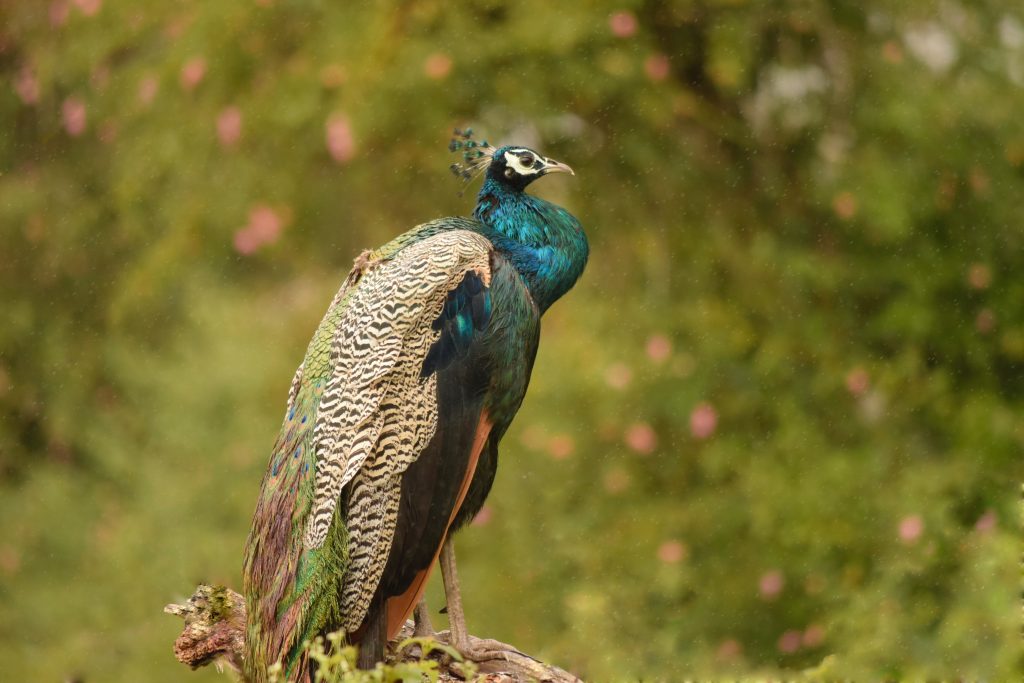
The showy Indian peafowl is best known for the male’s extravagant tail feathers that can exceed 5 feet in length. But both sexes have a distinctive crest atop their heads. These ground-dwelling birds inhabit forests and woods in India and Sri Lanka where they forage on seeds, fruits, insects, and small reptiles.
Key Facts:
- Length: Male – 43 inches; Female – 31 inches
- Wingspan: Male – 59 inches; Female – 46 inches
- Habitat: Forest, jungle
- Diet: Seeds, fruit, insects, small reptiles
- Range: India, Sri Lanka
Indian Roller
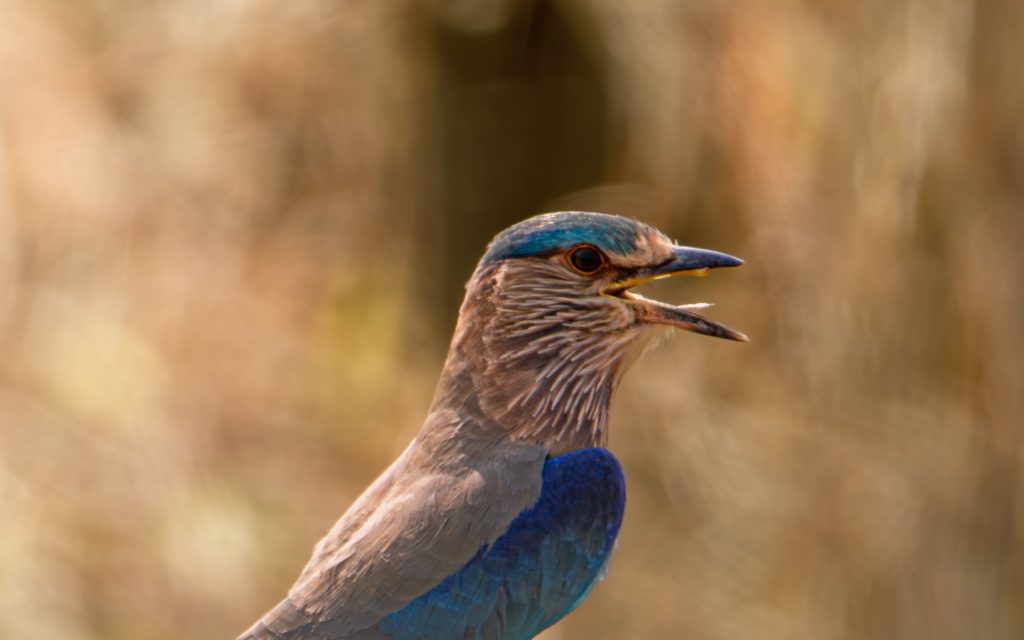
Widespread across the Indian subcontinent, the Indian roller is a striking bright blue bird with a turquoise-colored head. It is easily identified in flight by the gorgeous patchwork of blues on its wings and tail. This solitary bird perches conspicuously atop trees and other elevated vantage points scanning for prey.
Key Facts:
- Length: 12-14 inches
- Wingspan: 24-26 inches
- Habitat: Open woodland, cultivated areas, plains
- Diet: Insects, frogs, rodents
- Range: Indian subcontinent
Iranian Redwing
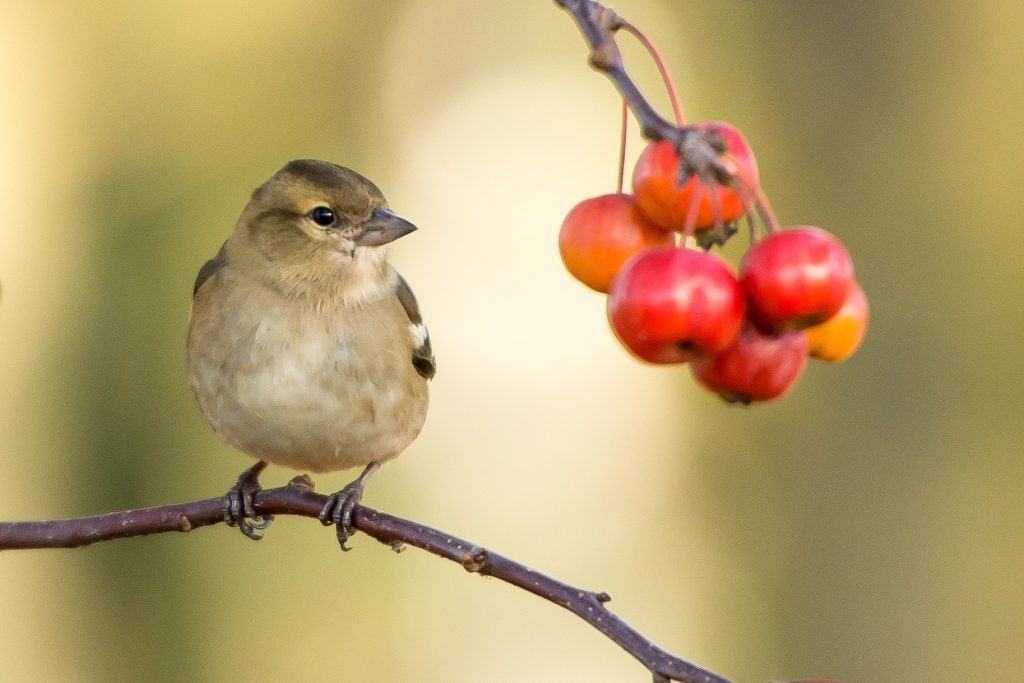
The Iranian redwing is an elusive species of babbler endemic to Iran’s Zagros Mountains where it favors hillside shrublands dotted with oak trees. It feeds on invertebrates and is named for the patches of red feathers found on the wings of males. Loss of habitat threatens this little-known bird.
Key Facts:
- Length: 7 inches
- Wingspan: 9 inches
- Habitat: Mountain shrubland
- Diet: Insects and other invertebrates
- Range: Western Iran
Ivory Gull
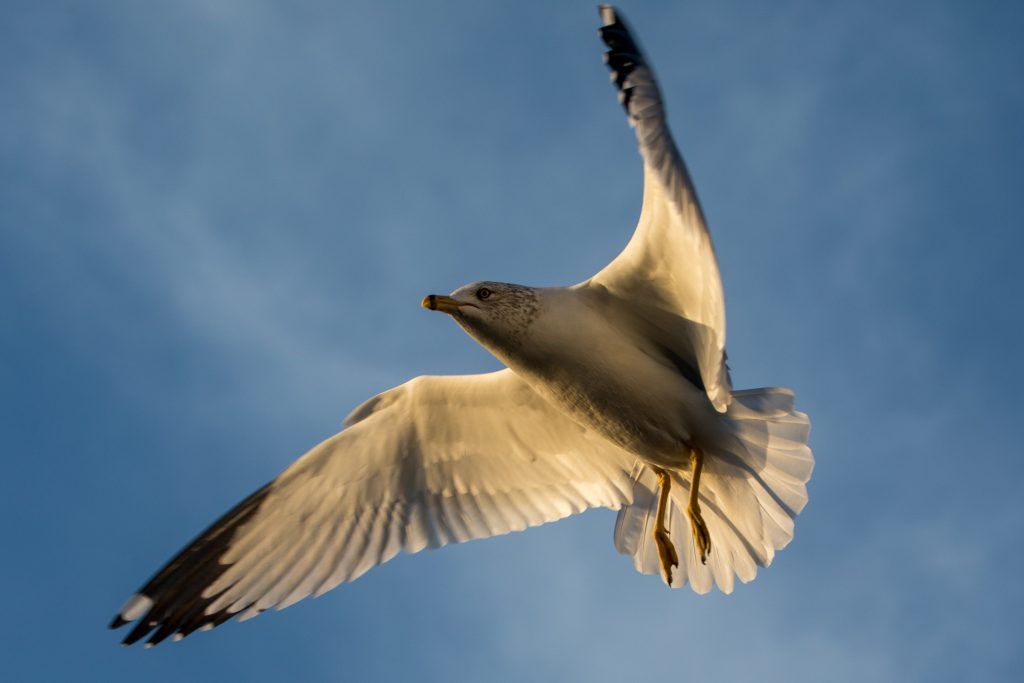
The ivory gull is an elegant all-white gull that makes its nest on rocky cliffs and ice shelves in the extreme north of Canada, Greenland, Norway, and Russia. It feeds on fish near the edge of the polar ice cap. Considered a sentinel species, declining ivory gull numbers signal major changes taking place in the fragile Arctic marine environment.
Key Facts:
- Length: 16-20 inches
- Wingspan: 41-49 inches
- Habitat: High Arctic – ice shelves, rocky cliffs by ocean
- Diet: Fish, marine invertebrates
- Range: High Arctic region
Izu Thrush
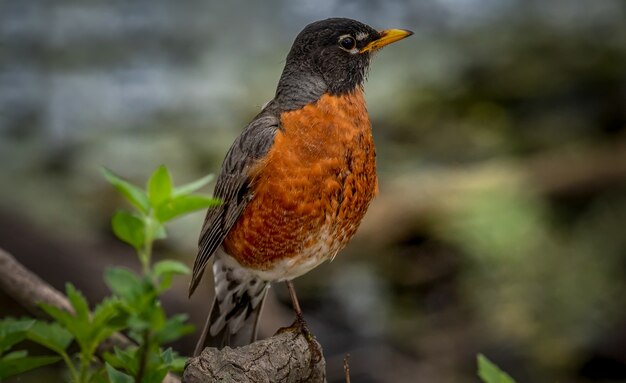
Native to several islands south of Japan, the Izu thrush’s lovely song echoes across the dense forests it calls home. Both the male and duller female have striking white heads that contrast sharply with their gray bodies. This medium-sized thrush probes the leaf litter with its yellow bill searching for insects and worms.
Key Facts:
- Length: 8-9 inches
- Wingspan: 14 inches
- Habitat: Forest, scrub
- Diet: Insects, worms, snails
- Range: Islands south of Japan
Table 1 summarizes key details on the 16 birds starting with I covered so far.
Table 1. Summary of Birds Starting with I
| Name | Location | Size | Habitat | Diet |
|---|---|---|---|---|
| Ibis | Africa, Asia, Europe, Australia | 18-27 in | Marshes, wetlands | Invertebrates, fish |
| Indigo bunting | Eastern North America | 4.7-5.1 in | Thickets, woodlands | Seeds, insects |
| Inca dove | Southwestern USA, Mexico | 8 in | Desert, brush | Seeds, grains |
| Iiwi | Hawaiian Islands | 5-6 in | Forests | Nectar, insects |
| Indian peafowl | India, Sri Lanka | 31-43 in | Forests | Seeds, fruit, insects |
| Indian roller | India | 12-14 in | Woodlands, plains | Insects, frogs, rodents |
| Iranian redwing | Iran | 7 in | Mountain shrubland | Invertebrates |
| Ivory gull | High Arctic | 16-20 in | Ice shelves, cliffs | Fish, invertebrates |
| Izu thrush | Islands off Japan | 8-9 in | Forests | Insects, worms |
Iolo
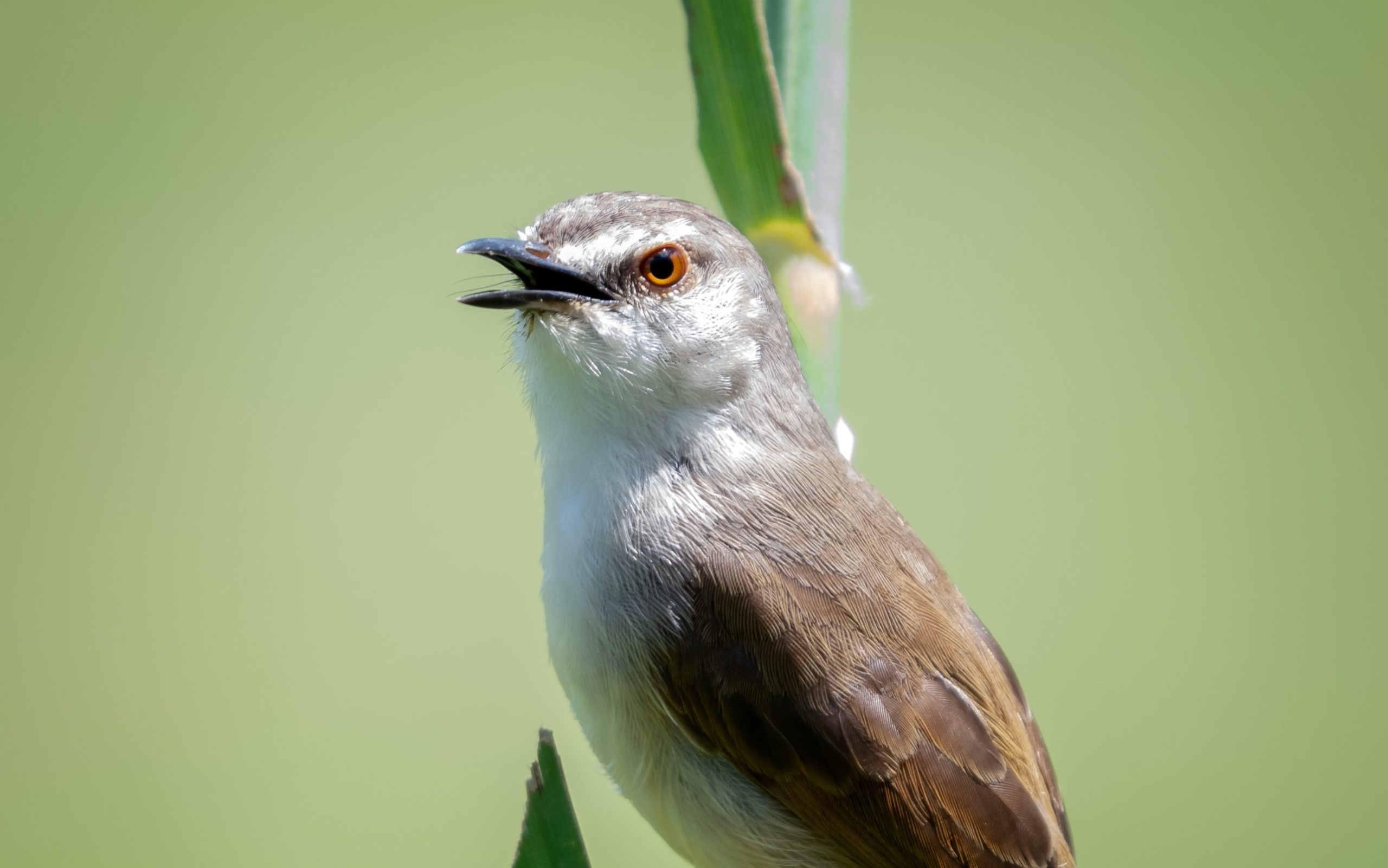
Iolo (pronounced Yol-o) is the Hawaiian name for the endangered Maui parrotbill, a small olive-yellow honeycreeper found only in Maui’s high-elevation rainforests. Its parrot-like bill allows it to pry open leaf buds and branches to look for insect larvae. Disease spread by introduced mosquitoes poses the gravest threat to this extremely rare bird.
Key Facts:
- Length: 5.5 inches
- Wingspan: 3 inches
- Habitat: Maui rainforest
- Diet: Insects, insect larvae
- Range: Maui, Hawaii
Isabelline Wheatear
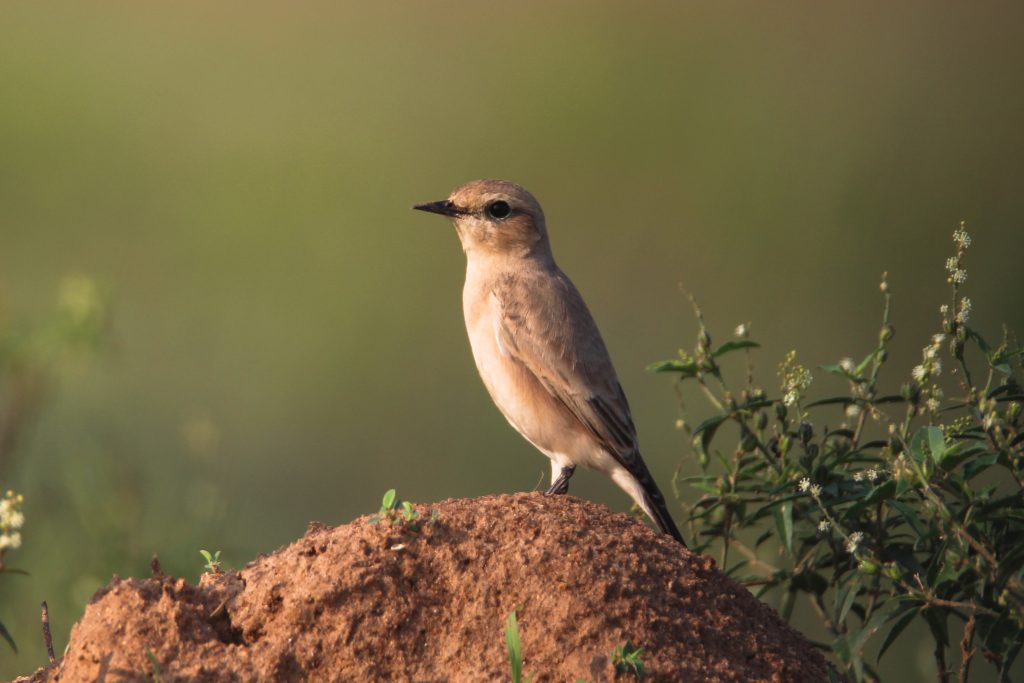
A medium-sized songbird, the Isabelline wheatear breeds across Central Asia and migrates long distances to winter in eastern Africa. It prefers open country and is named for its distinctive sandy brown plumage. This hardy traveler crosses immense deserts and high mountain ranges during its annual migrations between continents.
Key Facts:
- Length: 7 inches
- Wingspan: 11 inches
- Breeding habitat: Grassland, steppe
- Wintering habitat: Arid open land
- Diet: Insects and other small invertebrates
- Range: Breeds in Central Asia; winters in eastern Africa
Indian Pitta
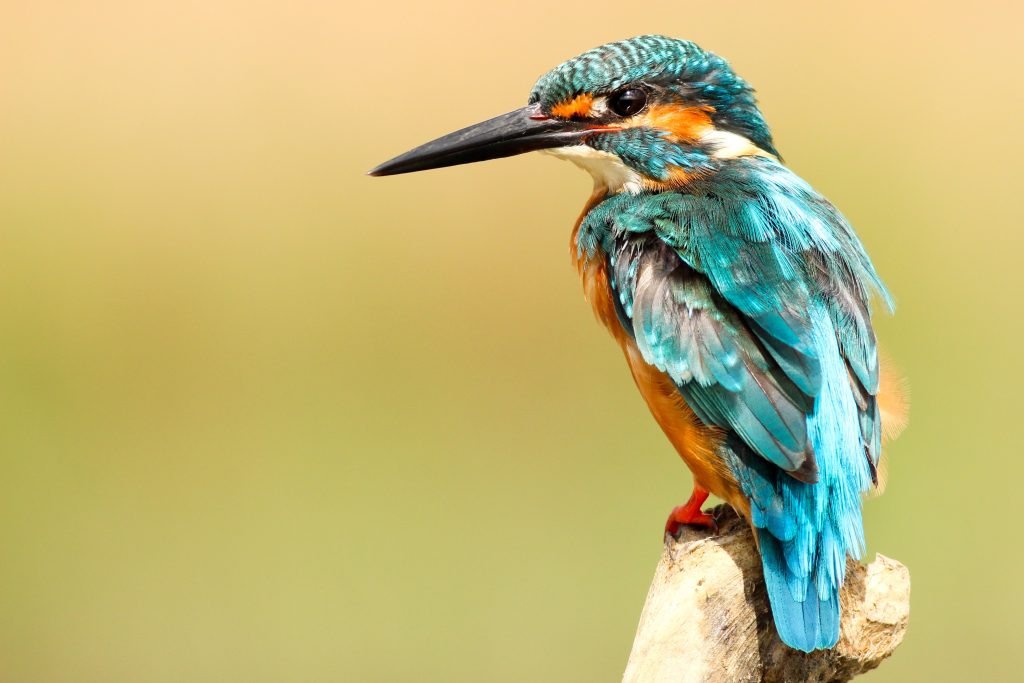
The Indian pitta is a brightly colored puffy bird adorned in red, black, turquoise, and yellow plumage. Usually shy and reclusive, it can nonetheless often be detected thanks to its piercing whistles. It hops through the forest floor litter grabbing snails, beetles and other prey in its stout black bill.
Key Facts:
- Length: 9 inches
- Wingspan: 12 inches
- Habitat: Subtropical forest
- Diet: Snails, insects and other invertebrates
- Range: Indian subcontinent, Southeast Asia
- Range: Indian subcontinent, Southeast Asia
Conservation Status
Unfortunately, over half the world’s bird species face population threats putting them at risk of extinction. Habitat loss impacts native birds globally:
- The Hawaiian honeycreepers illustrate alarming rates of avian decline. Due to deforestation and invasive predators, over 75% of Hawaii’s 140+ endemic bird species no longer exist. Of the 30 remaining, most qualify as endangered. Targeted conservation aims to prevent complete extinction.
- Widespread species like ibises fare better overall but still experience regional habitat pressures. For example, the African sacred ibis saw Egyptian population crashes when wetlands were drained for agriculture. Other colonies remain stable however.
- For less studied species like indigobirds, overhunting and the pet trade pose unclear threats. Tracking population data helps assess true extinction vulnerability.
In summary, while some “I birds” maintain healthy numbers in ideal habitats, continued preservation efforts help more sensitive species cling to survival, like the incredibly rare iwi. Habitat and species protection serves as the lifeline.
Conclusion: bird starts with i
Birds that begin with the letter I include an ecologically diverse collection representing numerous families, continents, and migration strategies. The 16 species profiled here give just a glimpse into the beauty and behavioral richness that exists among the world’s avifauna. From the India-dwelling ibis to the Iranian highlands’ redwing, each fills an important environmental niche. Many face grave threats from habitat degradation to climate change necessitating thoughtful safeguards. Getting to better know these I-birds through study and observation is key to valuing the natural heritage they embody and should compel us to ensure their tomorrow.
FAQs About bird starts with i
What kinds of birds start with the letter I?
The 16 birds profiled in this article showcase the wide variety among I-birds. Examples span tiny hummingbird-like species such as the Iiwi and larger birds including the iconic Indian peafowl. They come from ecological zones ranging from Arctic climes (ivory gull) to steamy wetlands (ibis).
What bird starting with I has the widest wingspan?
Of the birds described here, the Indian peafowl possesses the most sizable wingspan by a significant margin. A male’s wings may stretch some 59 inches across. By contrast the endangered Maui parrotbill has a wingspan of barely 3 inches.
Which I-bird migrates farthest?
The Isabelline wheatear undertakes an epic migration spanning from central Asia where it breeds in summer months to eastern Africa for the winter season. This round trip covers thousands of miles crossing immense deserts and high mountain ranges.
Are any birds starting with I endangered?
Several I-birds face grave threats pushing them frighteningly close to extinction. The Iranian redwing is at risk from habitat loss in its restricted range. Hawaii’s Iiwi and Iolo populations have crashed from disease and predators. Climate change also poses severe challenges for Arctic gulls.
What is unusual about the rock iguana’s inclusion?
Unlike the other 15 entries, the rock iguana is actually a lizard not a bird. It was included primarily for the curiosity invoked by its name – and to showcase the unique biodiversity of the Caribbean. This helps reinforce the value in protecting all creatures great and small with which we share planet Earth.
Which I-bird has the longest tail feathers?
Male Indian peafowl possess enormously lengthy tail plumes that may exceed five feet, likely the longest among birds named here. Female peafowl tails by comparison measure a mere foot long. These iconic feathery trains play a crucial role in mating displays.
Which bird starting with I has the widest range?
The red-winged blackbird can be found across expansive sections of North and Central America ranging as far north as central Alaska and Canada down through Panama – a geographic distribution unmatched by other birds described. Huge migratory flocks traverse this broad territory.
What do the various I-birds eat?
Diets differ significantly among the species covered. Larger wading birds like ibises feast on fish, frogs, crustaceans and other aquatic creatures. Songbirds such as indigo buntings and finches opt for mainly insects and seeds. Meanwhile the iiwi and hummingbirds favor sugary flower nectar.
How many different I-bird families were described?
This article spotlighted species representing over a dozen distinct bird families. This includes herons and egrets, gulls, thrushes, blackbirds, pigeons, kingfishers and barbets among others. Taxonomically, the true diversity of the avian order is captured by these I-birds.
Where do most of these birds live?
While a few like the ivory gull and wheatear inhabit Arctic or temperate environments, most I-birds described dwell primarily in the tropics and subtropics. India, Southeast Asia and Hawaii represent common ranges for many. There is a conspicuous dearth across Europe, Australia and the Americas.

